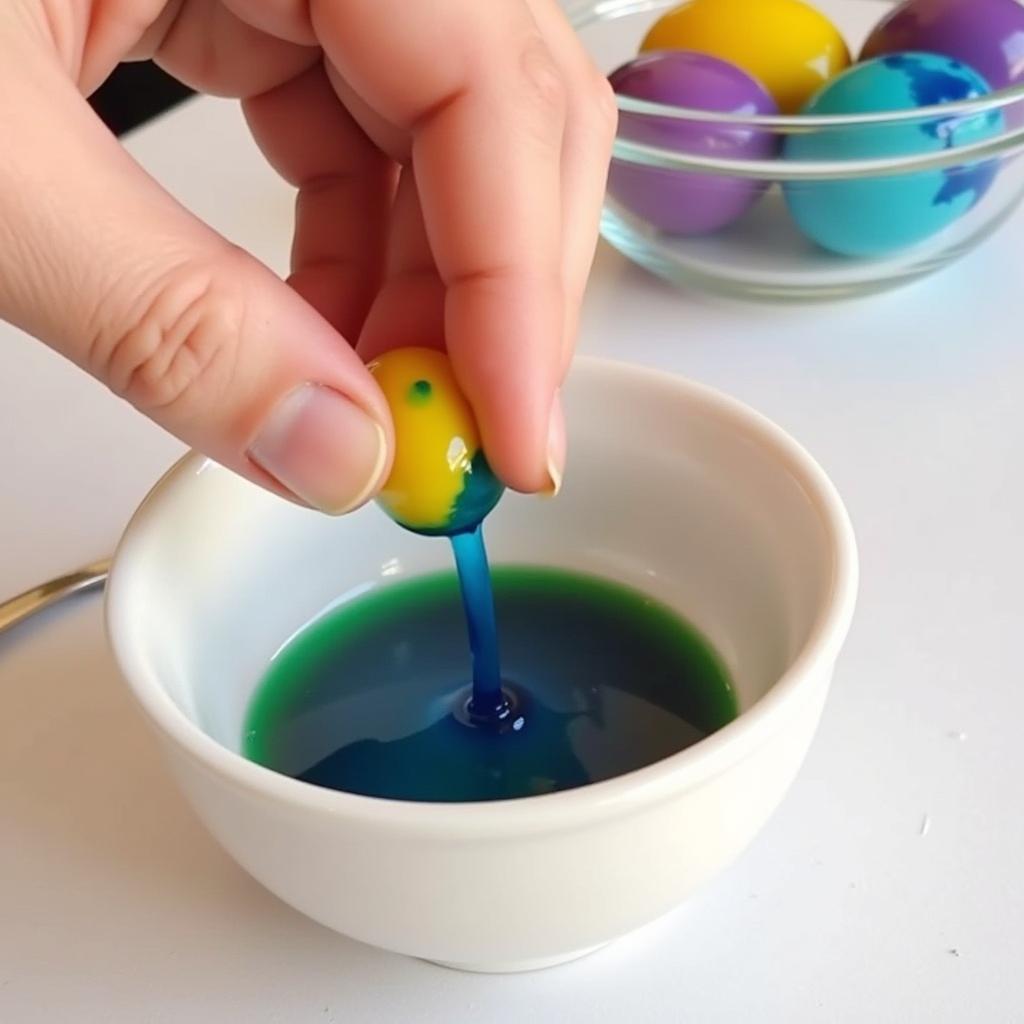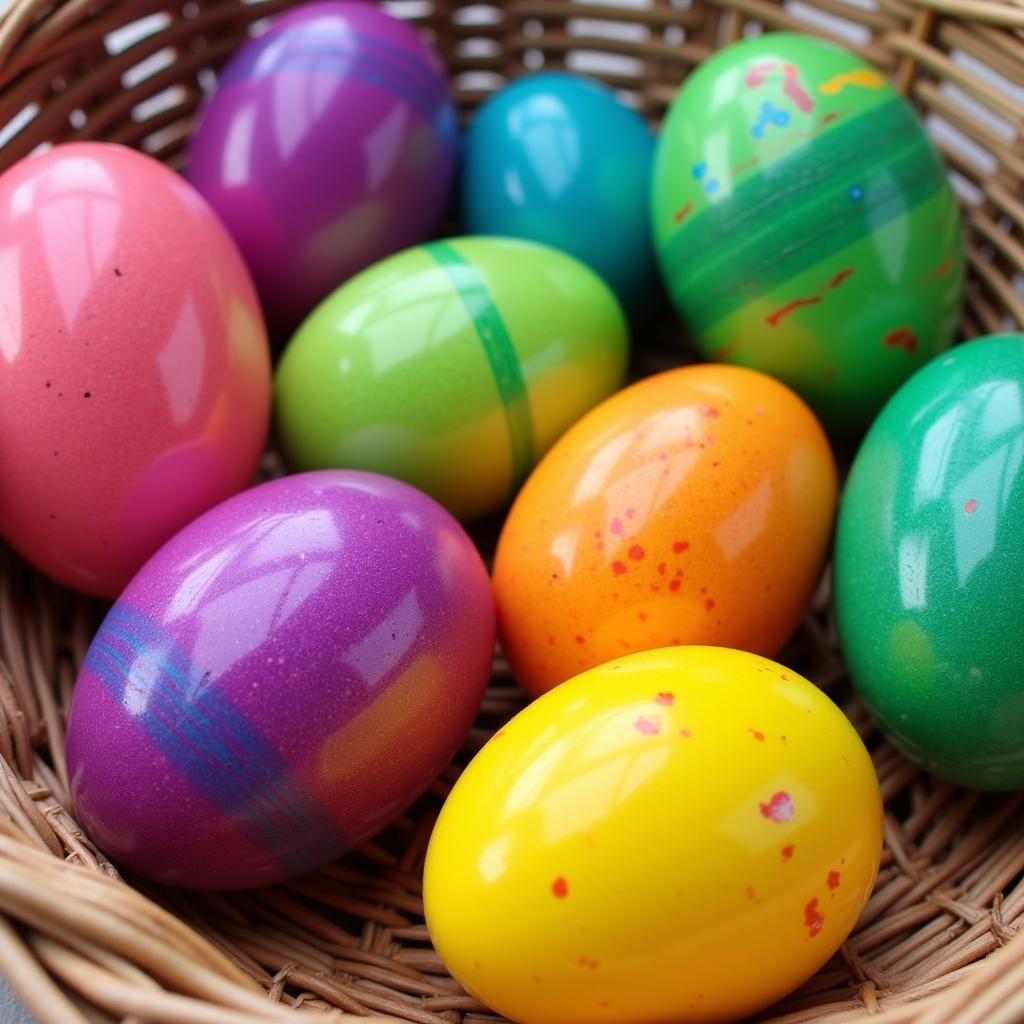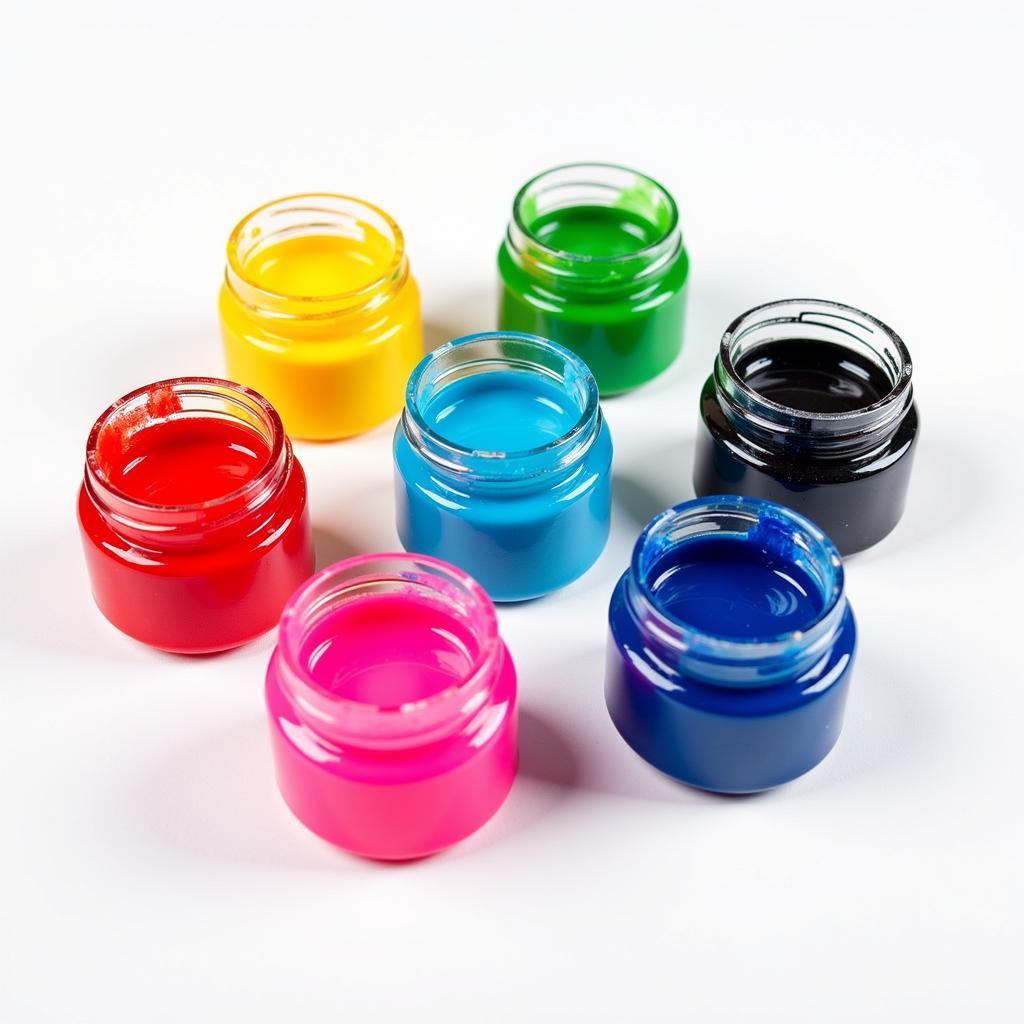Yes, you absolutely can dye eggs with gel food colors! In fact, many find gel food coloring produces richer, more vibrant hues than traditional liquid dyes. This opens up a world of possibilities for creating stunning, brightly colored eggs for Easter, spring celebrations, or any crafting project.
Using gel food coloring for dyeing eggs might seem a little unconventional, but it’s a surprisingly effective method. Unlike liquid dyes which can sometimes appear watered down, gels offer concentrated pigment, resulting in deeper, more saturated colors. This is especially great if you’re aiming for bold, jewel-toned eggs or trying to achieve specific shades for a themed project. Thinking of dyeing eggs emerald green to match your St. Patrick’s Day decorations? Gel food coloring makes it easy. Want vibrant purple eggs for a whimsical Easter basket? Gels are your go-to. And for a classic touch, red food paste coloring is a fantastic option.
Achieving Vibrant Colors with Gel Food Coloring
The key to successfully dyeing eggs with gel food coloring lies in properly dissolving the gel. Because it’s thicker than liquid dye, you’ll need to take an extra step to ensure smooth, even coverage. This involves mixing the gel with a small amount of hot water before adding it to your vinegar and water dye bath.
Dissolving the Gel for Seamless Color
Start by adding a small amount, about a teaspoon or so, of very hot water to your gel food coloring. Stir vigorously until the gel is completely dissolved and you have a smooth, liquid consistency. You can use a toothpick or a small whisk for this. Once dissolved, add this mixture to your prepared dye bath, which typically consists of hot water and vinegar.
 Dyeing Eggs with Gel Food Coloring
Dyeing Eggs with Gel Food Coloring
The vinegar helps the color adhere to the eggshells and creates more vibrant hues. For deeper colors, add more of the dissolved gel mixture to your dye bath. Remember, it’s always easier to add more color than to take it away!
Tips for Dyeing Eggs with Gel Food Colors
- Start with white eggs: White eggs provide the best canvas for vibrant colors.
- Use hot water: Hot water helps the dye penetrate the eggshell and creates more intense color.
- Add vinegar: Vinegar acts as a mordant, helping the dye bind to the eggshell.
- Experiment with colors: Don’t be afraid to mix and match gel colors to create custom shades. For example, combining food dye purple and food dye green can create a deep teal.
Troubleshooting Common Issues
Sometimes, you might encounter a few hiccups when dyeing eggs with gel food coloring. Here’s a quick troubleshooting guide:
- Uneven color: This usually happens if the gel isn’t fully dissolved. Make sure to mix it thoroughly with hot water before adding it to the dye bath.
- Speckles of undissolved gel: Again, this points to improper dissolving. Double-check that the gel is completely smooth before adding it to the dye bath.
- Pale colors: This could indicate that you haven’t used enough gel. Add more dissolved gel mixture to the dye bath for a more intense color.
 Vibrant Dyed Easter Eggs
Vibrant Dyed Easter Eggs
“Gel food coloring offers a fantastic way to achieve truly vibrant and long-lasting color on your Easter eggs,” says renowned food stylist, Amelia Cartwright. “The concentrated pigment allows for deep, rich hues that simply aren’t possible with traditional liquid dyes.”
Exploring Different Dyeing Techniques
Beyond traditional dipping, there are other creative ways to use gel food coloring to dye eggs. You could try marbling, where you swirl different colors together on the surface of the water before dipping the egg. Or, consider using rubber bands or stickers to create patterns and designs.
Can I use gel food coloring for other food projects?
Absolutely! Gel food coloring is incredibly versatile. You can use it for coloring frosting, cake batter, fondant, and various other culinary creations. If you are considering convenient options for other projects, food dye tablets are worth checking out. You might find the precision offered by liquid purple food coloring particularly useful for intricate designs.
“The beauty of gel food coloring lies in its versatility,” adds Amelia. “From vibrant Easter eggs to intricately decorated cakes, the possibilities are endless.”
 Variety of Gel Food Colors
Variety of Gel Food Colors
In conclusion, using gel food coloring to dye eggs is a fantastic way to achieve vibrant, long-lasting color. By following these simple tips and techniques, you can create stunning Easter eggs or colorful creations for any occasion.
FAQ
- How long should I soak the eggs in the dye bath? For vibrant colors, aim for 15-20 minutes.
- Can I reuse the dye bath? Yes, you can reuse the dye bath for multiple eggs, but the color may become less intense with each use.
- How do I store dyed eggs? Store dyed eggs in the refrigerator for up to a week.
- What can I do with leftover dyed eggs? Deviled eggs, egg salad, or simply enjoy them as a snack.
- Is gel food coloring safe to eat? Yes, gel food coloring is generally safe to consume.
- Can I mix gel food coloring with liquid food coloring? Yes, you can mix them, but keep in mind that the gel will add a thicker consistency.
- Where can I buy gel food coloring? Most grocery stores and baking supply stores carry gel food coloring.
Need more dyeing inspiration? Check out our articles on achieving specific colors, like our guide on achieving vibrant greens.
For further assistance, please contact us at Phone Number: 02437655121, Email: minacones@gmail.com Or visit our address: 3PGH+8R9, ĐT70A, thôn Trung, Bắc Từ Liêm, Hà Nội, Việt Nam. We have a 24/7 customer service team.